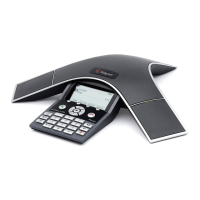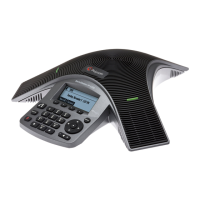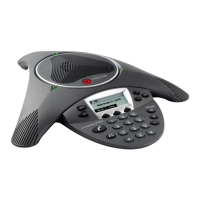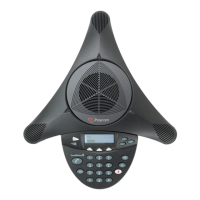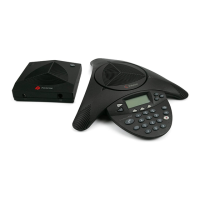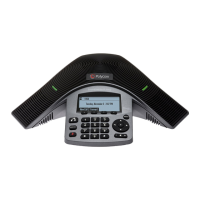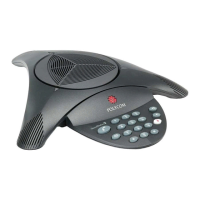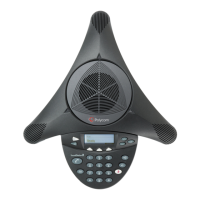User Guide for the Polycom SoundStation IP 6000 Phone
4 - 8
Broadcasting Messages Using Push-to-Talk and Group
Paging
The Group Paging feature enables you to make pages—one-way audio
announcements—to users subscribed to a page group. The Push-to-Talk (PTT)
feature is a collaborative tool that enables you to exchange broadcasts to users
subscribed to a PTT channel, much like a walkie-talkie. Your system
administrator can set up both features on your phone.
Your system administrator can define up to 25 Paging Groups for Group
Paging mode or Channels for PTT mode. Your system administrator may
assign a label to each group or channel that easily identifies the phones in the
group or channel, such as All, HR Dept, Shipping Staff, or Executives. Each
group or channel will have one of the following priorities:
• Normal—By default, broadcasts sent to Groups/Channels 1 to 23 are
considered Normal broadcasts. If two users begin a broadcast on the same
group/channel at the same time, the phone with the lower serial number
will continue to transmit while the other phone will enter the receiving
state. By default, all phones are configured to receive broadcasts sent to
Group/Channel 1.
•Priority—By default, broadcasts sent to Group/Channel 24 are
considered Priority broadcasts. A Priority broadcast will interrupt Normal
broadcasts or active calls. All phones receive Priority broadcasts unless
Do Not Disturb is enabled. Phones play Priority broadcasts at the phone’s
current audio level.
• Emergency—By default, broadcasts sent to Group/Channel 25 are
considered Emergency broadcasts. An Emergency broadcast will
interrupt Normal broadcasts, Priority broadcasts, and active calls and will
play out at near maximum volume even if Do Not Disturb (DND) is
turned on.
Push-to-Talk Mode
Your system administrator can enable your phone to operate in a broadcast
mode called Push-to-Talk (PTT). In order to send and receive PTT broadcasts,
you have to subscribe to PTT channels.
PTT broadcasts are collaborative: you can transmit messages and listen to
replies.
Sending and Receiving PTT Broadcasts
By default, you’re subscribed to Channels 1, 24, and 25. This means that you
can send and receive PTT broadcasts on Channels 1, 24, and 25.
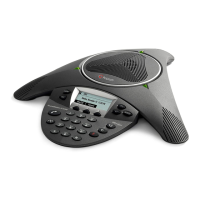
